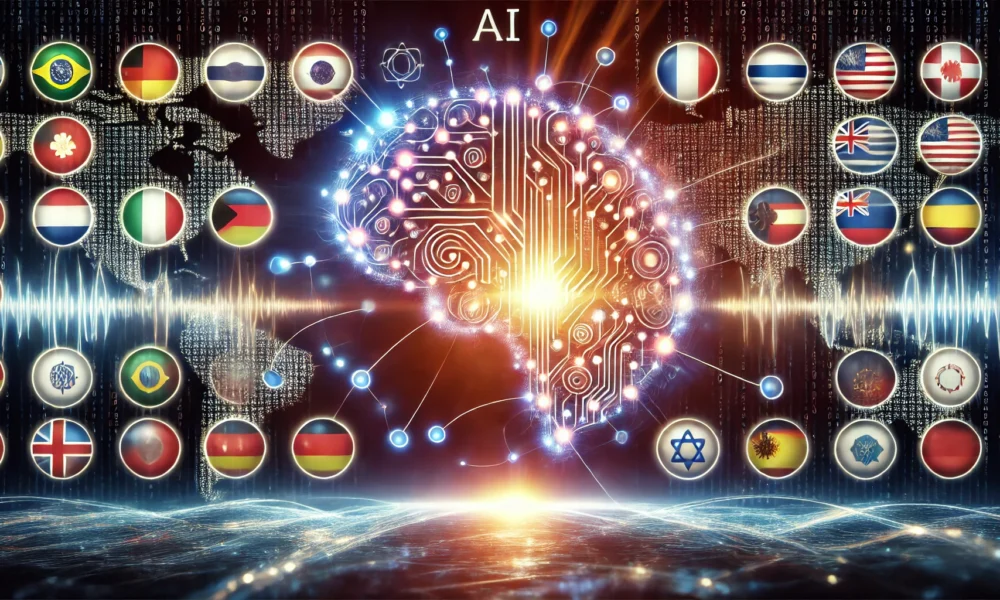MoEngage Secures $100 Million Funding Round to Enhance Global AI-Driven Customer Engagement
MoEngage, a leading customer engagement platform operating in 75 countries, has successfully raised new funding led by Goldman Sachs Alternatives to accelerate its global growth and integrate advanced AI features into its services.
Details of the Series F Funding Round
The funding round, totaling $100 million, consists of approximately 60% primary and 40% secondary shares. This Series F round also marks the entrance of A91 Partners, an Indian venture firm, co-leading the round alongside Goldman Sachs Alternatives. To date, MoEngage has raised a total of $250 million in funding.
The Shift Towards AI-Driven Marketing Solutions
As consumer brands increasingly turn to digital channels to engage customers, the competition for consumer attention has escalated. Brands are now leveraging existing customer data to deliver more personalized marketing experiences. While traditional marketing platforms continue to serve the industry, there is a growing demand for AI-powered tools that automate decision-making and minimize manual effort. MoEngage positions itself in this evolving space with its innovative Merlin AI suite, designed to help marketing and product teams launch campaigns quickly and optimize targeting.
“We assist B2C brands in effectively engaging their customers by leveraging the first-party data they already possess,” said co-founder and CEO Raviteja Dodda in an interview.
Expanding Global Reach and Market Impact
MoEngage, established 11 years ago, spent its early years primarily focused on India and Southeast Asia. However, over the past four years, it has significantly expanded its market presence, particularly in North America, which now accounts for over 30% of its revenue. Additionally, about 25% of the revenue comes from Europe and the Middle East, while the remaining 45% is generated in India and Southeast Asia.
Goldman Sachs’ recent investment will further strengthen MoEngage’s global footprint. The investment bank also played a pivotal role in the company’s prior Series E round, which raised $77 million in June 2022.
“Our current investors have deep knowledge about our company’s performance, both strengths and weaknesses,” Dodda noted. “[Goldman Sachs] leading this round validates our core fundamentals.”
Investment in AI Innovation
In the last two to three years, MoEngage has heavily invested in generative and decisioning AI capabilities, with these advancements reflected in its Merlin AI suite—which includes various AI agents tailored for marketing applications.
These AI agents function like copywriters, assisting consumer brands in crafting marketing messages, generating multiple campaign variants, and producing natural language text paired with suitable images. The suite also incorporates decisioning AI tools to help brands strategize which customers to target, using which channels, and at the optimal times.

Serving a Diverse Clientele
MoEngage currently serves more than 1,350 global consumer brands, including renowned names like SoundCloud, McAfee, Kayak, Domino’s, Deutsche Telekom, and major Indian players like Swiggy, Flipkart, Ola, Airtel, and Tata. Traditional enterprises contribute around 60% of the company’s business, while 40% comes from internet-focused firms. The platform also partners with over 25 global banks and several major insurers, including JPMorgan Chase, Citibank, and India’s largest insurer, Life Insurance Corporation (LIC).
Many of these brands had previously relied on marketing tools from incumbents like Adobe, Oracle, and Salesforce. MoEngage has successfully converted over 300 of these clients, driving growth in both North America and the EMEA regions.
For instance, SoundCloud transitioned over 120 million users to MoEngage within just 12 weeks, utilizing AI-driven insights to expedite product launches and improve retention among its paid users, as highlighted by Hope Barrett, Senior Director of MarTech at SoundCloud.
Numerous clients previously depended on multiple specialized solutions for various tasks. MoEngage streamlined these operations into a single platform, effectively lowering costs and enhancing marketing efficiency.
“Our clients, whether they are banks or e-commerce companies, utilize MoEngage to consolidate all customer data from various touchpoints, including offline stores, websites, mobile apps, and more,” Dodda explained.
Future Growth and IPO Aspirations
Without providing specific figures, Dodda disclosed that MoEngage experienced approximately 40% year-over-year growth last year and aims for a 35% compound annual growth rate (CAGR) over the coming three years. The company also anticipates achieving quarterly adjusted EBITDA-positive status by the end of the current fiscal year.
MoEngage identifies companies like Braze and CleverTap, along with legacy marketing platforms from Adobe, Oracle, and Salesforce, as its primary competitors.
Currently, MoEngage employs around 800 individuals across 15 global offices and plans to expand its workforce, especially in North America and Europe. This will involve scaling its customer success, support, sales, and marketing teams to deepen its market presence. Additionally, MoEngage is focused on enhancing its AI capabilities and recruiting talent to support these initiatives.
The company aims to be IPO-ready within the next few years, although Dodda did not disclose a specific timeline for this move.
“We see a tremendous opportunity to build a multi-billion dollar revenue company in our space,” he concluded.
Here are five FAQs based on the investment by Goldman Sachs in MoEngage:
FAQ 1: What is MoEngage?
Answer: MoEngage is a customer engagement platform that helps businesses personalize their marketing efforts through data-driven insights. It offers tools for email, mobile push notifications, in-app messaging, and web engagement to enhance user experience and retention.
FAQ 2: Why did Goldman Sachs invest in MoEngage?
Answer: Goldman Sachs invested in MoEngage to fuel its global expansion. The investment reflects confidence in MoEngage’s innovative technology and its potential for significant growth in the competitive customer engagement market.
FAQ 3: How will the funding be used by MoEngage?
Answer: MoEngage plans to use the new funding to enhance its product offerings, accelerate its global expansion, and invest in marketing efforts. This will enable the company to reach more clients and improve customer engagement solutions.
FAQ 4: What impact does this investment have on MoEngage’s market position?
Answer: The investment positions MoEngage as a stronger player in the customer engagement sector. With additional resources, the company can expand its services, improve technology, and compete more aggressively with other market leaders.
FAQ 5: What are the expected outcomes of this expansion for businesses using MoEngage?
Answer: Businesses using MoEngage can expect enhanced tools and features that facilitate better customer engagement, improved user insights, and more effective marketing campaigns, ultimately leading to increased customer satisfaction and retention.





